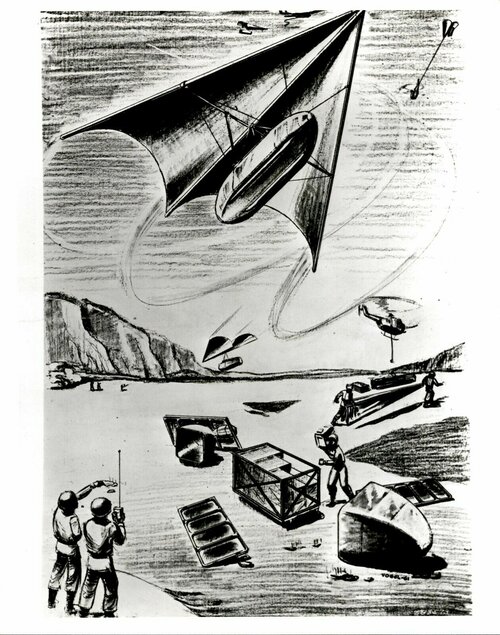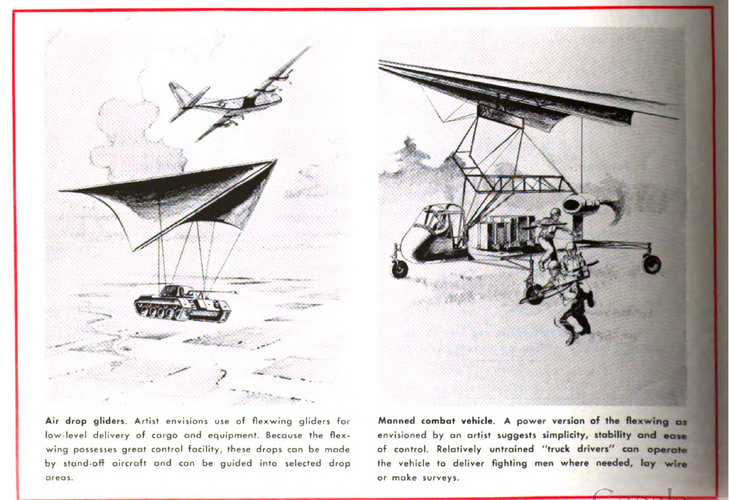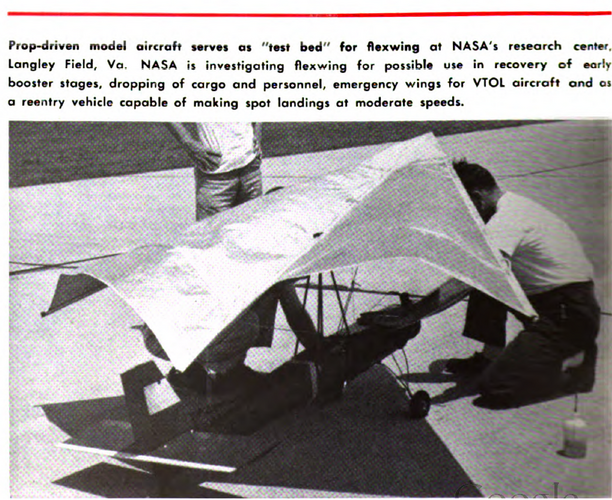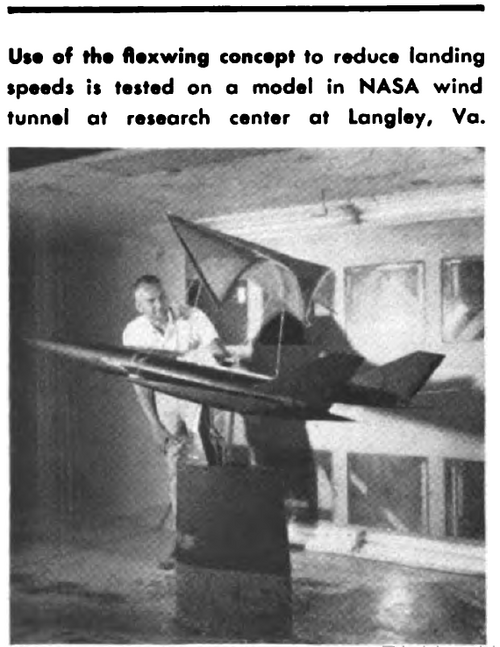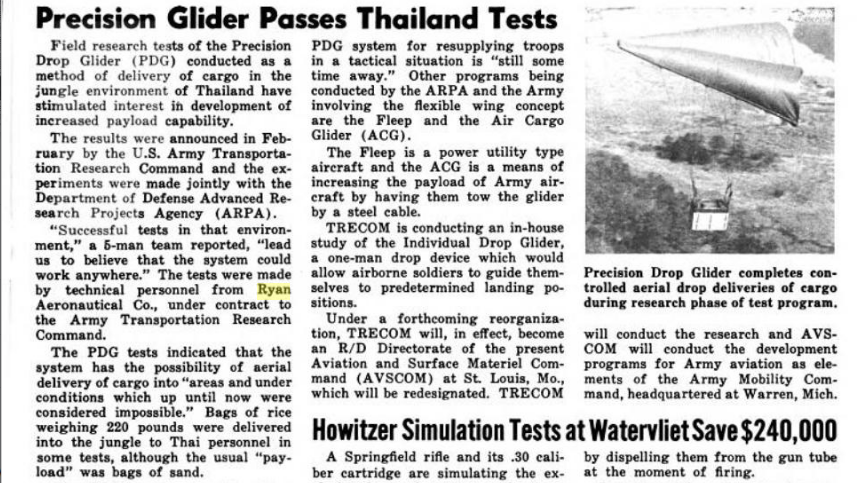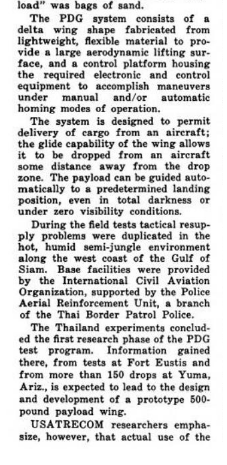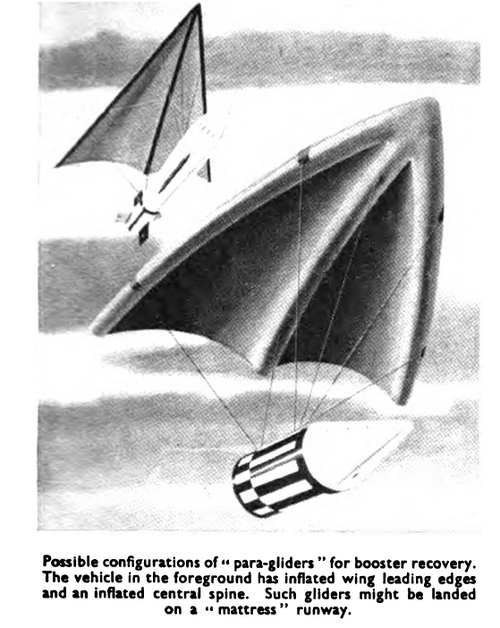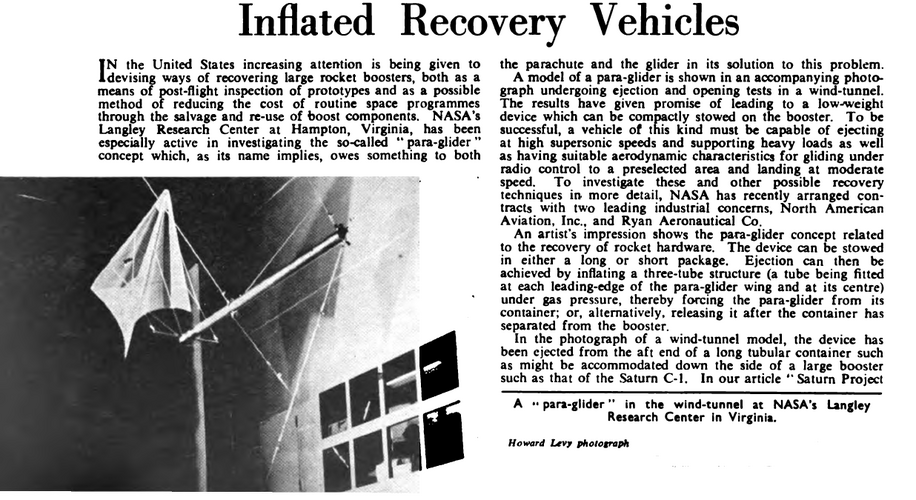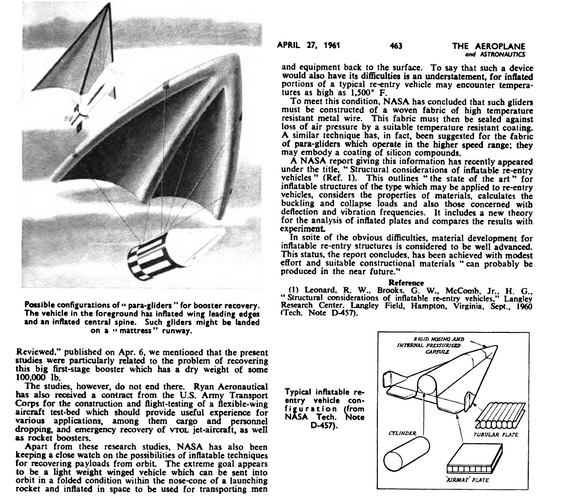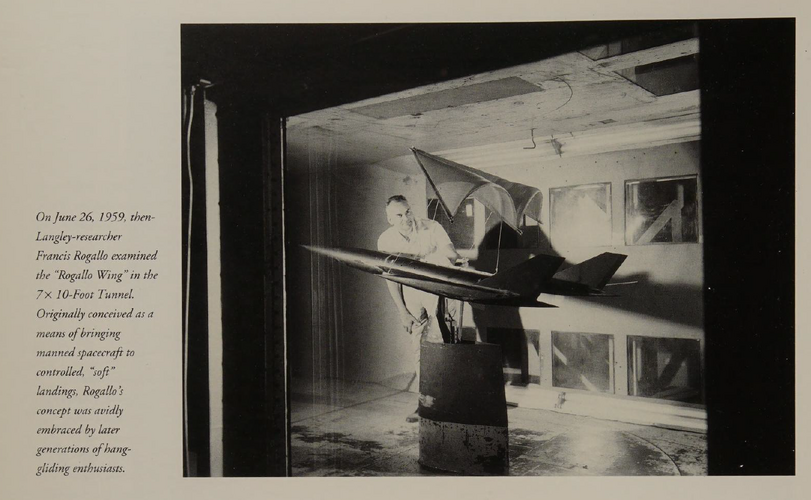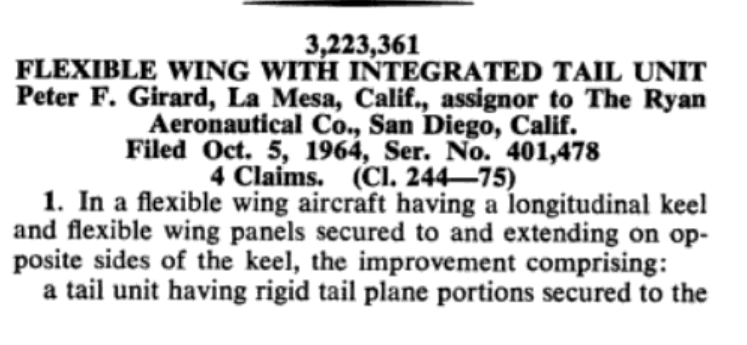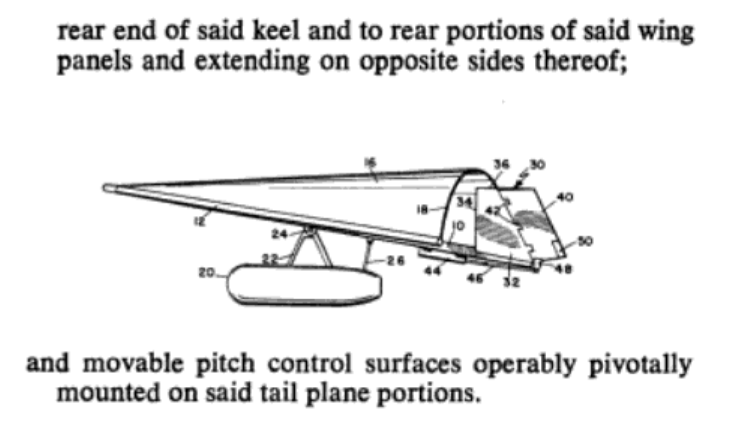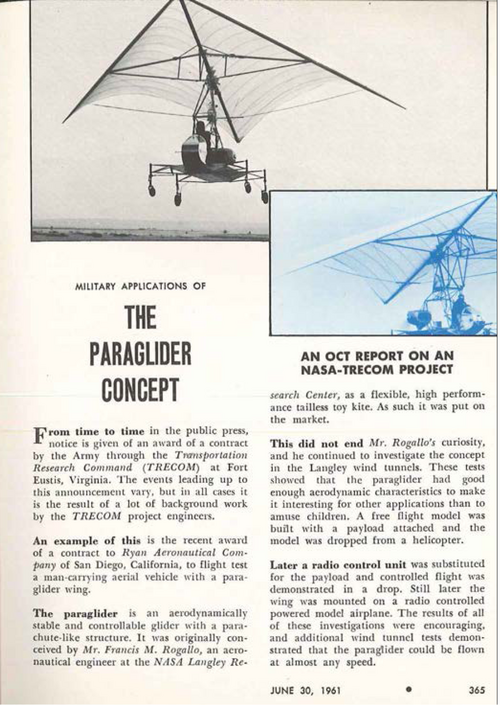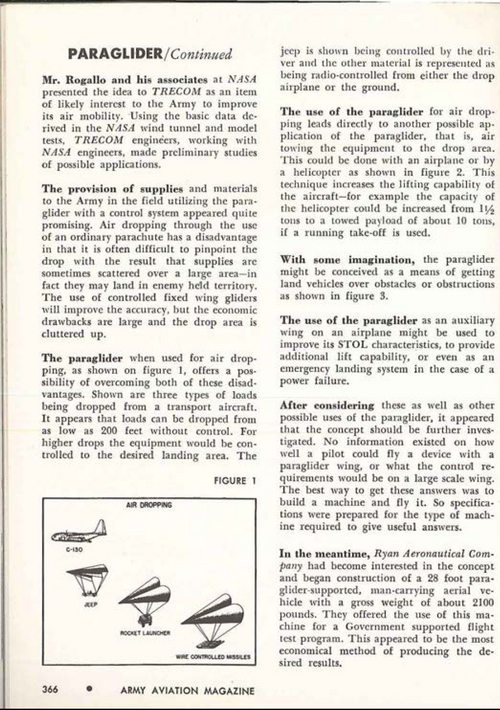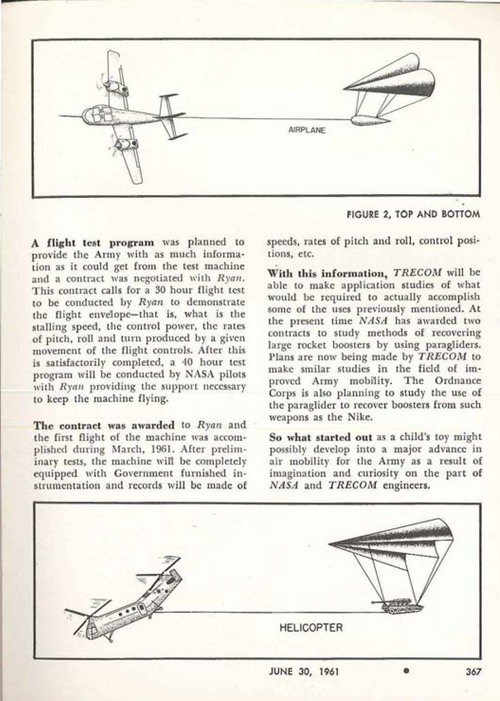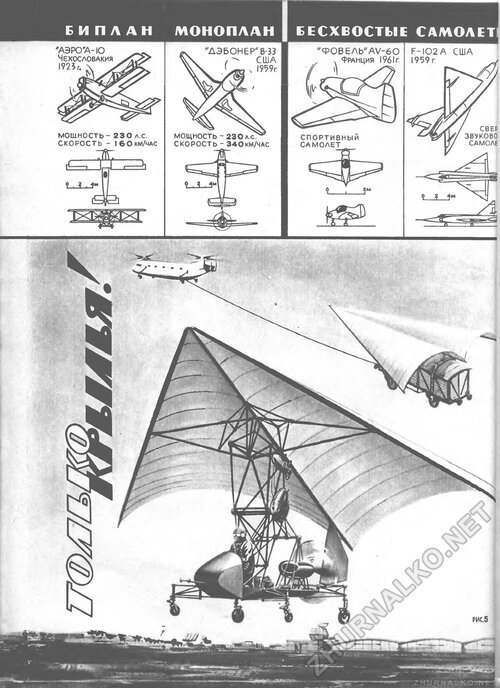You are using an out of date browser. It may not display this or other websites correctly.
You should upgrade or use an alternative browser.
You should upgrade or use an alternative browser.
Ryan "Rogallo wing" concepts
- Thread starter robunos
- Start date
- Joined
- 26 May 2006
- Messages
- 34,901
- Reaction score
- 15,761
From Army 1960.
From NASA.
Attachments
No, Starship is not a reason for this to workWith military use of Starship-perhaps this can be looked at again.
- Joined
- 11 March 2012
- Messages
- 3,249
- Reaction score
- 3,179
Like I hinted at in post #70, during the 1970s all sport parachute manufacturers were struggling with the question of how to soften opening shock.Ryan had HUGE plans for paragliders. But unfolding them in flight was way too tricky and dangerous.
Irvin tried their Opening Shock Inhibitor on their Delta II. OSI was essentially a wide strap (8”?) wrapped around the top of the suspension lines. A sheet of Teflon reduced friction burns to suspension lines. OSI enjoyed limited success.
Then Jim Handbury installed a rectangular, 4 grommet, sail slider in his Paradactyl and that worked so well that sail sliders have dominated the skydiving business ever since.
PZ-81 has a two grommet slider attached to the pilot-chute (1 meter diameter?) to lift the canopy out of the container and hold the bottom skin closed until line stretch. The area of the pilot-chute is roughly the same size as the sail slider used by Hanbury.
Some versions of square Jalbert Para-Foils used similar 4 grommet, spider sliders connected to the pilot-chute by a long bridle (roughly the same length as the suspension lines). A few solo “style”’competitors installed double-length bridles (with a pulley on the slider slider) because they liked to deploy at faster air speeds (160 mph) than belly-fliers (120 mph). Remember that opening shock increases with the square of the speed when you toss your pilot-chute.
Perhaps memory materials that open origami style in a more gradual way.
When Adam Savage inflated the lead balloon—very fragile—he did that via a “twist” imparted by folds.
Perhaps aerospace may benefit from protein folding research?
Something to help unfold in steps…open…slow…open a bit more…slow a bit more.
Topology may be key.
When Adam Savage inflated the lead balloon—very fragile—he did that via a “twist” imparted by folds.
Perhaps aerospace may benefit from protein folding research?
Something to help unfold in steps…open…slow…open a bit more…slow a bit more.
Topology may be key.
Similar threads
-
ARPA Flex-Wings [Project AGILE related research] (1963)
- Started by Grey Havoc
- Replies: 1
-
-
Boeing Vertol Light Intratheatre Transport (LIT) V/STOL cargo aircraft
- Started by hesham
- Replies: 21
-
Rolls Royce old Hypersonic aircraft concept
- Started by hesham
- Replies: 10
-

